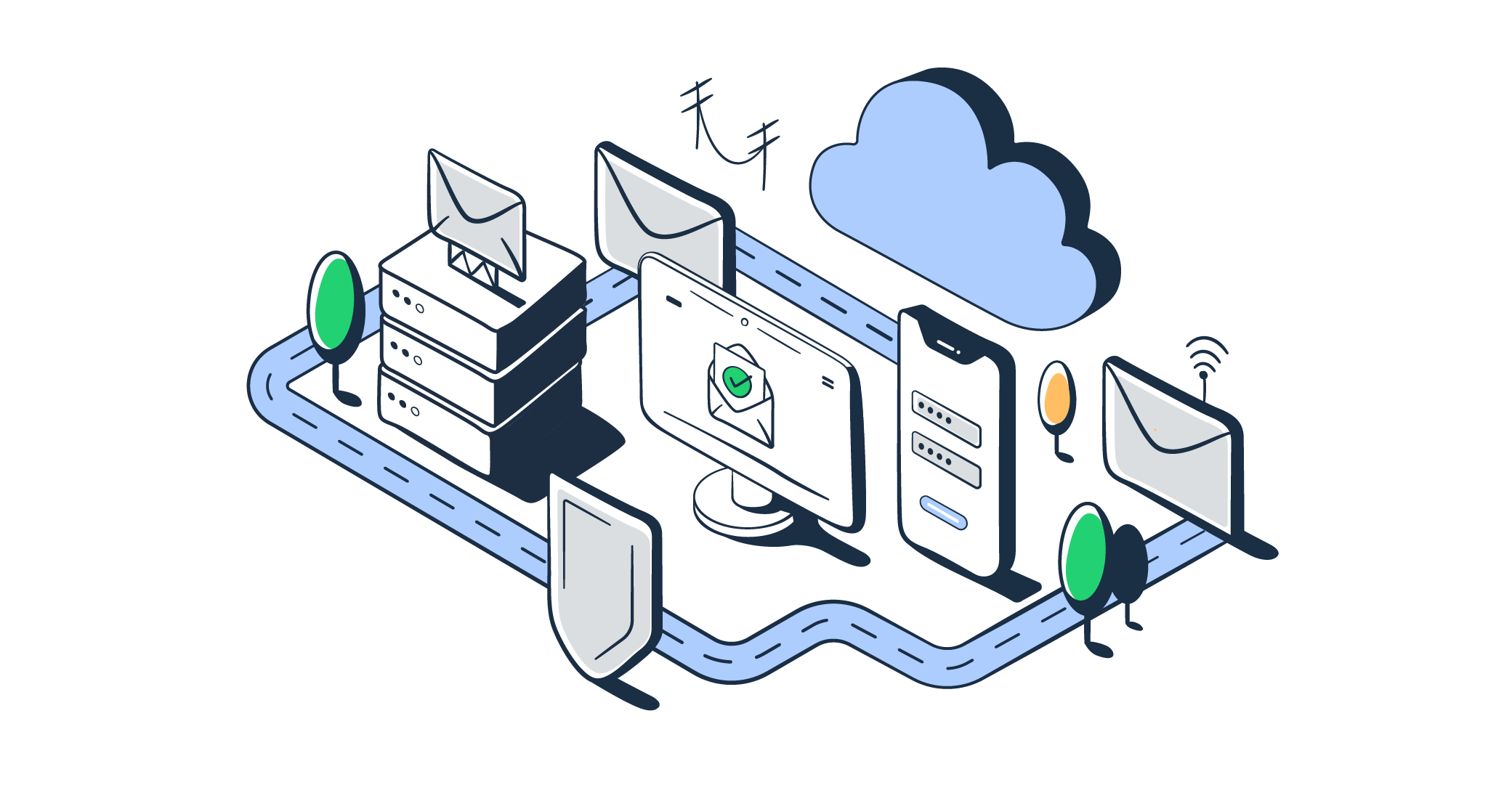In the digital age, email remains one of the most powerful tools for business communication—used for everything from client onboarding to transaction receipts. But behind every "sent" button lies a complex network of systems and protocols that ensure your email reaches its destination securely and reliably. This invisible framework is what we call email infrastructure.
What Is Email Infrastructure?
Email infrastructure refers to the technical ecosystem that allows emails to be created, routed, delivered, and monitored across the internet. It includes a variety of components such as:
- Mail Servers (SMTP, IMAP, POP)
- Email Sending Services or Gateways
- DNS Records (like SPF, DKIM, and DMARC)
- IP Reputation Systems
- Bounce & Feedback Loops
- Monitoring and Logging Tools
Setting up a robust infrastructure is essential for organizations that rely on high-volume or mission-critical emails (e.g., payment confirmations, password resets, marketing campaigns).
Why Is It Important?
You may think sending an email is simple, but in reality, it's more like passing through airport security than mailing a letter. Without proper infrastructure, your email could:
- End up in spam
- Get blocked by mail providers
- Be impersonated by spammers
- Fail to reach recipients entirely
This can harm your brand’s reputation and reduce user trust—especially if you’re sending transactional or sensitive information.
Key Elements of a Strong Email Infrastructure
Here are some core technical elements that determine whether your email lands in the inbox or vanishes into a spam folder:
1. Dedicated IP Address
Sharing an IP with other unknown senders (common in free or cheap email platforms) can get you blacklisted if others abuse it. Using a dedicated IP lets you control and build your own sender reputation.
2. Domain Authentication
This is where DNS records come into play:
- SPF (Sender Policy Framework): Verifies that the sending server is authorized to send emails on behalf of your domain.
- DKIM (DomainKeys Identified Mail): Adds a digital signature to confirm the email was not altered in transit.
- DMARC (Domain-based Message Authentication, Reporting & Conformance): Tells recipients how to handle unauthenticated messages (e.g., reject or quarantine them).
These three act like passports, proving your identity to receiving mail servers.
3. Warm-Up Process
New domains or IPs need to "warm up" by gradually increasing their email volume over time. Sending thousands of emails on day one may trigger spam filters.
4. Reverse DNS & FBL Setup
Reverse DNS ensures your IP maps back to a domain, adding to your trustworthiness. Feedback loops (FBL) allow you to receive complaints from users who mark your email as spam, so you can improve your practices.
5. Monitoring & Analytics
Real-time dashboards that show delivery rate, open rate, bounce rate, and complaint rate are essential to maintaining and optimizing your performance.
Signs of a Broken Email Infrastructure
If your organization is experiencing:
- High bounce or complaint rates
- Consistent spam placement
- Delays in email delivery
- Authentication failures
…then it’s likely time to audit and upgrade your email infrastructure.
Cloud-Based Email Infrastructure: A Smarter Choice?
More businesses are now turning to cloud-based email services that handle infrastructure behind the scenes. These platforms come with built-in spam protection, scalable delivery, global infrastructure, and real-time monitoring.
However, even when using a third-party service, you’re still responsible for your domain’s reputation and DNS configurations.
Final Thought
Good email infrastructure is invisible when it works—but painfully obvious when it doesn’t. Whether you're running a global e-commerce site or a local SaaS startup, investing in the right infrastructure ensures your message lands in the right inbox, at the right time, every time.

